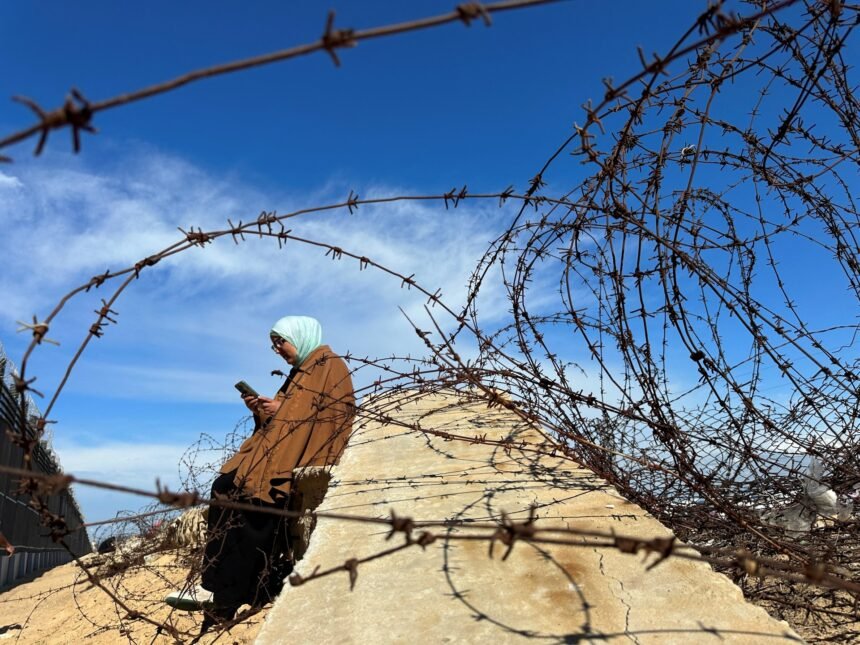Since October 7, 2023, the conflict of photographs has eclipsed the conflict of weapons. From Gaza’s pulverised hospitals and ravenous infants to mass graves and determined fathers digging by means of rubble, each pixel captured on a smartphone strikes deeper than a missile.
These uncooked, unfiltered, and simple photographs have a far larger influence than any press convention or official speech. And for the primary time in its historical past, Israel can’t delete them or drown them in propaganda.
The horrifying photographs of the Israeli military massacring individuals at help distribution places prompted newspaper Haaretz’s Gideon Levy to write down on June 29: “Is Israel perpetrating genocide in Gaza? […] The testimonies and pictures rising from Gaza don’t depart room for a lot of questions.”
Even staunchly pro-Israel commentator and New York Instances columnist Thomas Friedman not buys into the Israeli narrative. In a Could 9 op-ed, addressed to US President Donald Trump, he declared: “This Israeli authorities will not be our ally,” clarifying that it’s “behaving in ways in which threaten hard-core US pursuits within the area”.
As soon as, Israel’s narrative was protected by the gates of editorial rooms and the gravity of Western guilt. However the smartphone shattered these gates. What we see now’s not what Israel tells us — it’s what Gaza exhibits us.
The platforms carrying these photographs — TikTok, WhatsApp, Instagram, X — don’t prioritise context; they prioritise virality. Whereas older generations may look away, youthful ones are glued to the stream of struggling, absorbed by each pixel, each siren, each second of destruction. The worldwide public is agitated, and this works towards the Israeli curiosity. Israel is not simply at conflict with its neighbours; it’s at conflict with the lens itself.
The psychological toll of this visible conflict is reverberating deep inside Israeli society. For many years, Israelis had been conditioned to see themselves as international narrators of trauma, not topics of worldwide scrutiny. However now, with movies of Israeli bombardment, flattened Gaza neighbourhoods, and emaciated youngsters flooding each platform, many Israelis are grappling with a rising moral predicament.
There may be unease, even amongst centrists, that these visceral photographs are eroding Israel’s ethical excessive floor. For the primary time, public discourse in Israeli society contains worry of the mirror: what the world now sees and what Israelis are pressured to confront.
Internationally, the impact has been much more destabilising for Israel’s diplomatic standing. Longstanding allies, as soon as unconditionally supportive, now face rising home strain from residents who are usually not consuming official statements however TikTok’s dwell streams and Instagram’s picture feed.
Lawmakers in Europe and North America are brazenly questioning arms shipments, commerce offers, and diplomatic cowl, not due to the briefings they’ve on Israeli conflict crimes however as a result of their inboxes are flooded with screenshots of scattered physique components and ravenous youngsters.
The battlefield has expanded into parliaments, campuses, metropolis councils, and editorial rooms. That is the backlash of a conflict Israel can’t win with brute power. To regain management of the narrative, Israeli officers have pressured social media platforms to curb content material they dislike. But even Israel’s most subtle public diplomacy efforts are struggling to maintain tempo with the virality of uncooked documentation.
Behind closed doorways, the Israeli navy is not merely apprehensive about public relations; it’s involved about prosecution. The Israeli military has admonished troopers for taking selfies and filming themselves demolishing Palestinian houses, warning that such materials is now being harvested as proof by worldwide human rights organisations.
Footage and pictures from social media have already been utilized by activists to focus on Israeli servicemen overseas. In plenty of instances, Israeli residents have needed to flee nations they had been visiting attributable to conflict crimes complaints filed towards them.
Within the age of smartphones, the occupation is not simply seen — it’s indictable.
Up to now, Israel fought wars that it might clarify. Now, it fights a battle it may well solely react to — usually too belatedly and too clumsily. The smartphone captures what the missile conceals. Social media disseminates info that official briefings try and suppress. The haunting photographs, digitally preserved, be certain that we always remember any devastating atrocity, or act of brutality.
Photographs of battle don’t simply convey info; they will additionally redefine our perceptions and affect our political positions. The highly effective “Napalm Woman” picture that captured the aftermath of an assault by the US-allied South Vietnamese military on civilians throughout the Vietnam Warfare had a profound influence on American society. It helped create a big shift in public opinion concerning the conflict, accelerating the choice of the US authorities to finish it.
Right now, in Gaza, the stream of highly effective photographs doesn’t cease. Regardless of Israel’s finest efforts, the worldwide opinion is overwhelmingly towards its genocidal conflict.
Smartphones have utterly modified the character of battle by placing a digital camera within the arms of each witness. On this new period, Israel struggles to defeat the relentless, unfiltered visible document of its crimes that requires justice.
The views expressed on this article are the writer’s personal and don’t essentially mirror Al Jazeera’s editorial stance.
